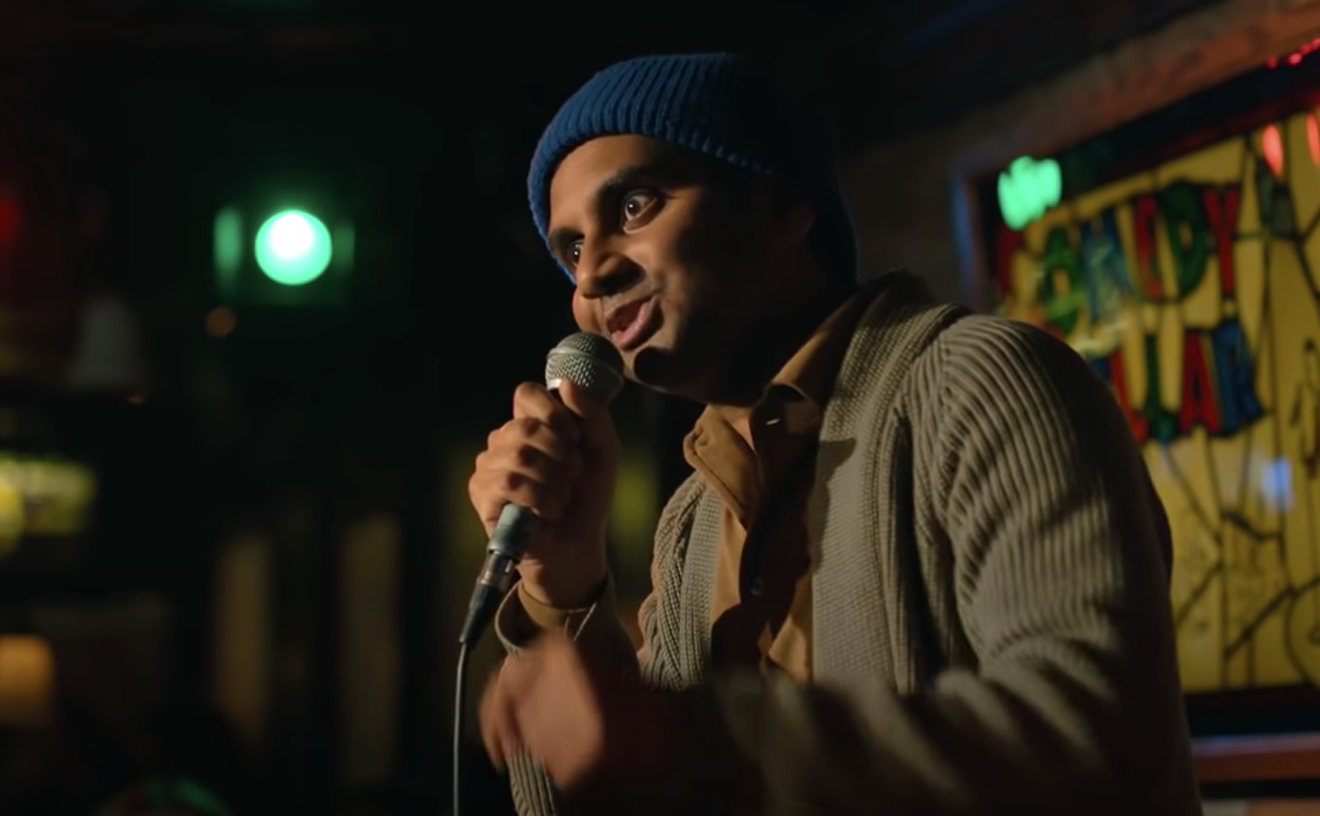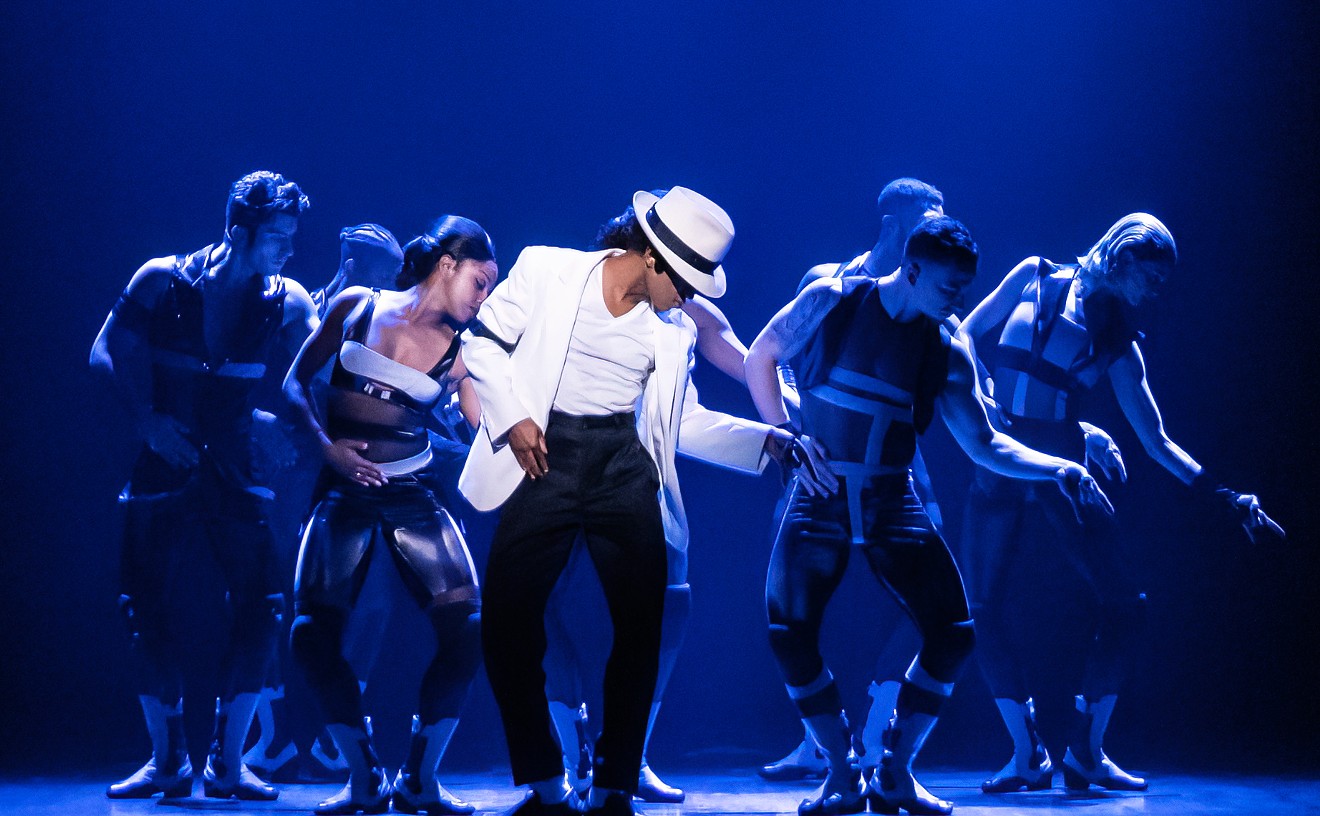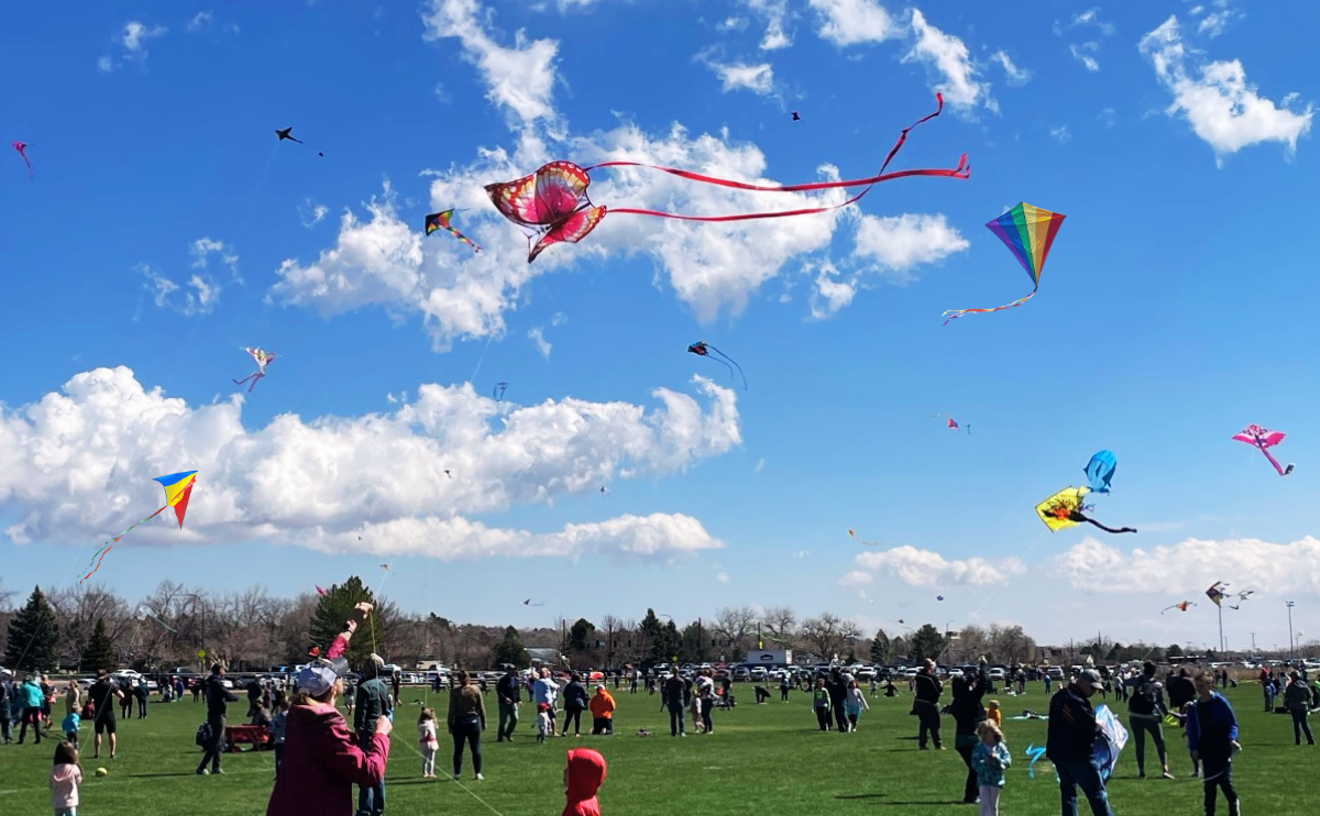I've been a longtime admirer of Dave Yust's work, so I knew I had to take the time to drive north to see Dave Yust: 40+ Years of Printmaking: A Retrospective, now in its final weeks at the Loveland Museum/Gallery. Given the topic of this large show — there are more than a hundred works on paper — it's important to point out that Yust is best known as a painter, so doing a show only about his prints gives us a new insight into his work. And though some of the prints were done in preparation for paintings, most were only meant to be realized in a print medium and were never thought of as studies.
See also: Photos: Dave Yust puts printmaking front and center
The show was organized by curator Maureen Corey, and it looks great; to take it in chronologically, enter the main gallery and turn to the left. The walls of this gallery have been painted a dark slate gray, which allows the bright colors that Yust likes to employ to pop out like jewels. But clearly it was Yust who specifically selected the pieces included, because they represent stops on a carefully constructed path he has followed since the 1970s, in which curves, circles and heart shapes play a prominent role.
Yust joined the art faculty at Colorado State University in 1965 and decided in 1971 to introduce himself to the art world in Denver with a solo show. As young artists sometimes do, Yust created a work of art as the invitation. This small piece, "Change in Scale, #10," which starts off the show, is a two-screen serigraph on silver metallic paper. Yust told me that this was controversial in the old-school print crowd because he made the invitations with master printer Fred Jurado — whose studio was right across from what is today Pirate — instead of doing them himself. Today, of course, this is the ordinary course for an artist. Over the years, Yust has employed the help of many local printmakers, including Gene Licht, Meg Ingraham and Bud Shark, with the artist singling out Mark Lunning from the distinguished roster as the printer he's collaborated with most.
That invitation is a circular print, and it led to a number of different circular prints, in which geometric shapes were juxtaposed to organic lines. In "Circular Composition #109," a one-color print from 1977, the union of geometric and organic forms coalesces into the unmistakable shape of a conventionalized heart. Unlike the non-objective nature of simple geometric shapes like circles, the hearts carry another meaning: love. Given this, it's not surprising to learn that Yust has collected hearts in different forms — like heart-shaped rocks — and given them to his wife, Joan, over the years. One compelling element of "#109" is the bronzing of the ink, in which a dark blue comes out as metallic copper when it's used in its undiluted form. Yust has experimented for years with metallics.
The heart shape is related to the lines that Yust includes in other works, some of which are inspired by the Nazca lines in South America. Others are taken from the catenary curves formed when a chain is allowed to define its own curve when loosely suspended between two points, à la Antonio Gaudi, one of Yust's many architectural mentors. (Some of his other mentors include less-is-more king Ludwig Mies van der Rohe and the post-modern intellectual Robert Venturi.)
The show culminates with the "Heart-Inclusion" series of heart-shaped prints from 2011 and 2012. Yust's idea of a print is a little more inclusive than the term implies; here he has pieced in elements of separate prints and then drawn or painted over parts of them, making these works, and many others in the show, essentially mixed-media paintings on paper. To get the heart shape of the paper, Yust tears the paper with the aid of a heart-shaped sheet of Masonite. The tearing creates a deckled edge to the paper.
But this isn't the only Yust show around. Proving that he isn't just a Colorado modern master but also a player on the contemporary scene is Dave Yust: Evidence(s) of Gravity and Heart-Shaped Monotypes, a handsome solo on display at Plus Gallery in Denver. In some sense, this show is a continuation of the one in Loveland. There is a large selection of the "Heart-Inclusion" prints, but given Yust's technique of cutting, inserting, drawing and painting, they're all unique. And rather than prints, the spotlight at Plus is on paintings — in particular, the large-ish circular paintings from Yust's "Chromaxiologic Inclusion" series. These are color-field abstractions that sport more of those broken catenary curves.
As much of the focus of both shows is on shapes, I can't conclude without remarking on Yust's astounding gift for color. As we were walking through the show in Loveland, Yust told me that he felt that his childhood painting lessons with Birger Sandzén had sparked his enduring embrace of bold and/or outlandish and unusual colors, a sensibility he still holds these many decades later.
The Yust shows are fantastic, but I also spent some time last week talking with Denver Art Museum director Christoph Heinrich about the incredible roster of upcoming shows he's planning for this spring. With Yves Saint Laurent and the just-closed van Gogh exhibits, the DAM proved beyond any shadow of a doubt that big names will bring in big crowds. So the hit parade will continue with an exhibit devoted to Georgia O'Keeffe, which opens next weekend, and one focusing on Mark Rothko this summer.
As if that weren't enough, Heinrich is also orchestrating a museum-wide series of shows anchored by textiles that will include entries from every curatorial department. Related to this will be a major Nick Cave solo in the Anschutz Gallery and the unveiling of the new textile gallery being installed right now by curator Alice Zrebiec on the sixth floor of the Ponti building. I won't even get into the trio of exhibits on the French masters coming this fall.
After sitting down with Heinrich, I ran into him again — and Yust — at the Christo event at Metro State's Center for Visual Art. One of the reasons Christo and his team were there was to present to the citizens of Colorado a matching pair of recent preparatory studies for his proposed "Over the River" project, which hopefully will be erected over the Arkansas River, in the southern part of the state, for two weeks sometime in the future.
The two multimedia studies were presented to Governor John Hickenlooper last Thursday and were hung in his office. "Over the River" is facing several lawsuits and can only move ahead if they are decided in Christo's favor. Christo explained that it would take 28 months to complete the project, and that since it's envisioned to happen during the summer, those 28 months have to start in January. Since January 2013 has come and gone, the soonest the piece could possibly be finished is summer of 2016 — if, that is, all the legal hurdles are cleared before this time next year.
I'm keeping my fingers crossed.










